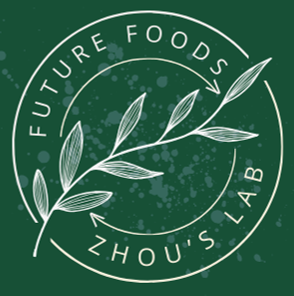The gastrointestinal fate of organic and inorganic nanoparticles in foods: impacts on lipid digestion and nutraceutical bioavailability (2017-2020)
Introduction
Inorganic or organic nanoparticles are often incorporated into foods to enhance their stability, nutrition, and quality. However, when they pass through the gastrointestinal environment, the properties of these nanoparticles can be altered, which impacts their biological effects and potential toxicity. Consequently, we systematically investigated how different kinds of nanoparticles behave within the gastrointestinal tract. We found that the gastrointestinal fate of nanoparticles in foods depends on their unique characteristics, as well as food matrix effects. For example, nanoparticles interact with many different components in foods and the gut, which leads to changes in their composition, structural organization, and behavior. These interactions could lead to alterations in the aggregation state, surface chemistry, and digestibility of ingested nanoparticles. It is therefore essential to reveal physicochemical and molecular mechanisms of how food-grade nanoparticles affect the lipid digestibility and nutraceutical bioaccessibility.
Main findings
In this project, Hualu, as a Ph.D. student supervised by Professor David Julian McClements at University of Massachusetts Amherst, fabricated or characterized food-grade nanoparticles (nanoemulsions, nanocellulose, nanochitin, titanium dioxide, etc.), and comprehensively investigated their alterations in physicochemical and structural properties as they passed through a simulated in vitro gastrointestinal tract (GIT), (e.g., INFOGEST). First, the behavior of food-grade titanium dioxide (TiO2)nanoparticles under simulated oral conditions were characterized [2]. Second, two nature-derived organic nanoparticles, anionic nanocellulose and cationic nanochitin, were fabricated [3,4]. These nanoparticles can stabilize lipid droplets and form Pickering emulsions. The impact emulsifier type (molecular versus particle) on the gastrointestinal fate of vitamin D3-fortified emulsions was examined by measuring their physicochemical properties, microstructure, digestibility, and bioaccessibility using an in vitro GIT model [5]. Third, the impact of nanochitin on the gastrointestinal fate of a model emulsion was examined. The addition of nanochitin to the emulsions reduced lipid digestion and β-carotene bioaccessibility [6]. Fourth, nanocellulose, lipid nanoparticles, and TiO2 particles were added to plant-based milks as examples of functional organic and inorganic nanoparticles. The various kinds of nanoparticles were well dispersed in simulated gastrointestinal fluids, which was attributed to protein adsorption to their surfaces and the mechanical action of the GIT fluids [2,7]. Fifth, it was found that calcium affected the digestion and bioaccessibility of vitamin-loaded lipid nanoparticles in plant-based milks using an in vitro gastrointestinal model. High levels of calcium (soluble or insoluble forms) reduced the bioaccessibility of vitamin D, which was attributed to the formation of insoluble calcium soaps in the small intestine [7]. Overall, these results are useful for understanding the impact of different kinds of nanoparticles on the behavior of foods within the gastrointestinal tract, which has been also summarized in a recent review article [8]. This information can help assess the potential functionality and toxicity of ingested nanoparticles. These findings are useful for the development of functional foods, such as fortified plant-based milks with improved physicochemical and bioaccessibility properties.

Reference
Zhou, H., Gastrointestinal fate of organic and inorganic nanoparticles in foods, Doctoral Dissertations, University of Massachusetts Amherst 2021. DOI: https://doi.org/10.7275/22369753.0.
Zhou, H.; Pandya, J. K.; Tan, Y.; Liu, J.; Peng, S.; Muriel Mundo, J. L.; He, L.; Xiao, H.; McClements, D. J. Role of mucin in behavior of food-grade TiO2 nanoparticles under simulated oral conditions. Journal of Agricultural and Food Chemistry 2019, 67 (20), 5882-5890. DOI: https://doi.org/10.1021/acs.jafc.9b01732.
Zhou, H.; Tan, Y.; Lv, S.; Liu, J.; Muriel Mundo, J. L.; Bai, L.; Rojas, O. J.; McClements, D. J. Nanochitin-stabilized Pickering emulsions: Influence of nanochitin on lipid digestibility and vitamin bioaccessibility. Food Hydrocolloids 2020, 106, 105878. DOI: https://doi.org/10.1016/j.foodhyd.2020.105878.
Zhou, H.; Dai, T.; Liu, J.; Tan, Y.; Bai, L.; Rojas, O. J.; McClements, D. J. Chitin nanocrystals reduce lipid digestion and β-carotene bioaccessibility: An in-vitro INFOGEST gastrointestinal study. Food Hydrocolloids 2021, 113, 106494. DOI: https://doi.org/10.1016/j.foodhyd.2020.106494.
Zhou, H.; Liu, J.; Dai, T.; Muriel Mundo, J. L.; Tan, Y.; Bai, L.; McClements, D. J. The gastrointestinal fate of inorganic and organic nanoparticles in vitamin D-fortified plant-based milks. Food Hydrocolloids 2021, 112, 106310. DOI: https://doi.org/10.1016/j.foodhyd.2020.106310.
Zhou, H.; McClements, D. J. Recent advances in the gastrointestinal fate of organic and inorganic nanoparticles in foods. Nanomaterials 2022, 12 (7), 1099. DOI: https://doi.org/10.3390/nano12071099.
